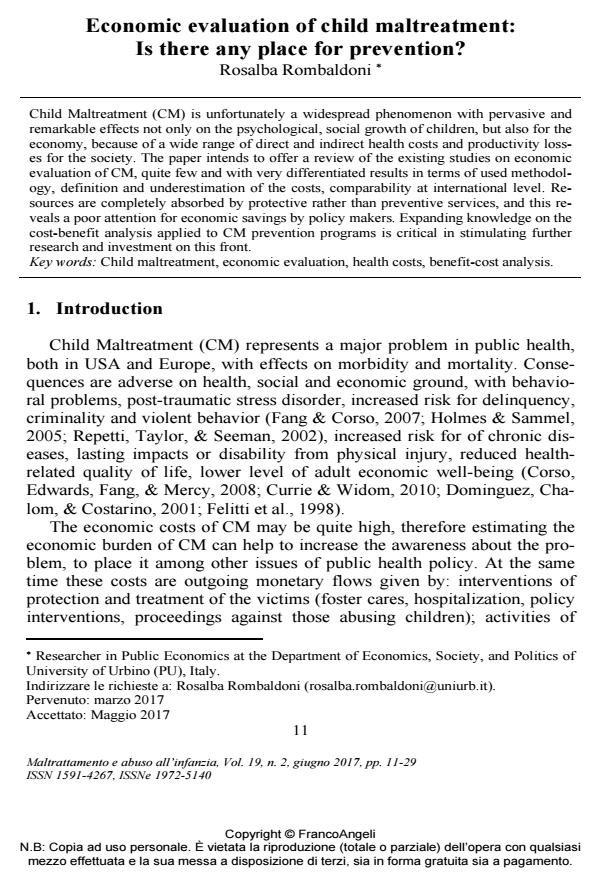Economic evaluation of child maltreatment: Is there any place for prevention?
Journal title MALTRATTAMENTO E ABUSO ALL’INFANZIA
Author/s Rosalba Rombaldoni
Publishing Year 2017 Issue 2017/2
Language English Pages 19 P. 11-29 File size 212 KB
DOI 10.3280/MAL2017-002002
DOI is like a bar code for intellectual property: to have more infomation
click here
Below, you can see the article first page
If you want to buy this article in PDF format, you can do it, following the instructions to buy download credits

FrancoAngeli is member of Publishers International Linking Association, Inc (PILA), a not-for-profit association which run the CrossRef service enabling links to and from online scholarly content.
Child Maltreatment (CM) is unfortunately a widespread phenomenon with pervasive and remarkable effects not only on the psychological, social growth of children, but also for the economy, because of a wide range of direct and indirect health costs and productivity losses for the society. The paper intends to offer a review of the existing studies on economic evaluation of CM, quite few and with very differentiated results in terms of used methodology, definition and underestimation of the costs, comparability at international level. Resources are completely absorbed by protective rather than preventive services, and this re-veals a poor attention for economic savings by policy makers. Expanding knowledge on the cost-benefit analysis applied to CM prevention programs is critical in stimulating further research and investment on this front.
Keywords: Child maltreatment, economic evaluation, health costs, benefit-cost analysis.
- Child Abuse and Neglect Elena Acquarini, Vittoria Ardino, Rosalba Rombaldoni, (ISBN:978-1-80355-510-2)
Rosalba Rombaldoni, Economic evaluation of child maltreatment: Is there any place for prevention? in "MALTRATTAMENTO E ABUSO ALL’INFANZIA" 2/2017, pp 11-29, DOI: 10.3280/MAL2017-002002